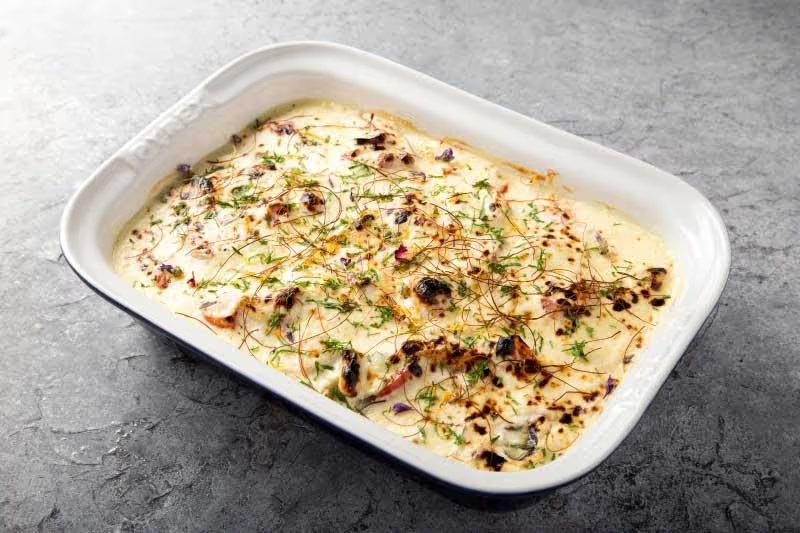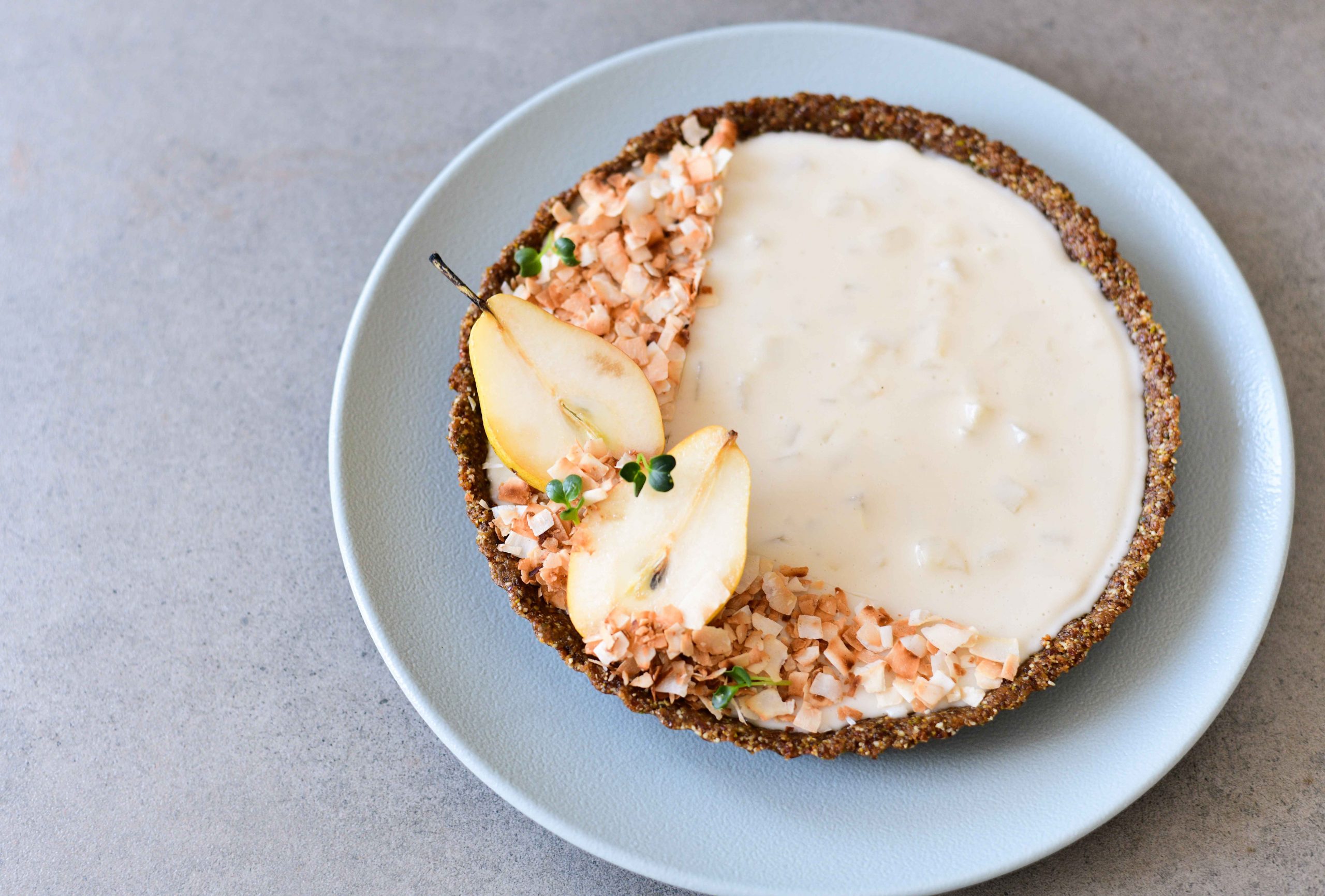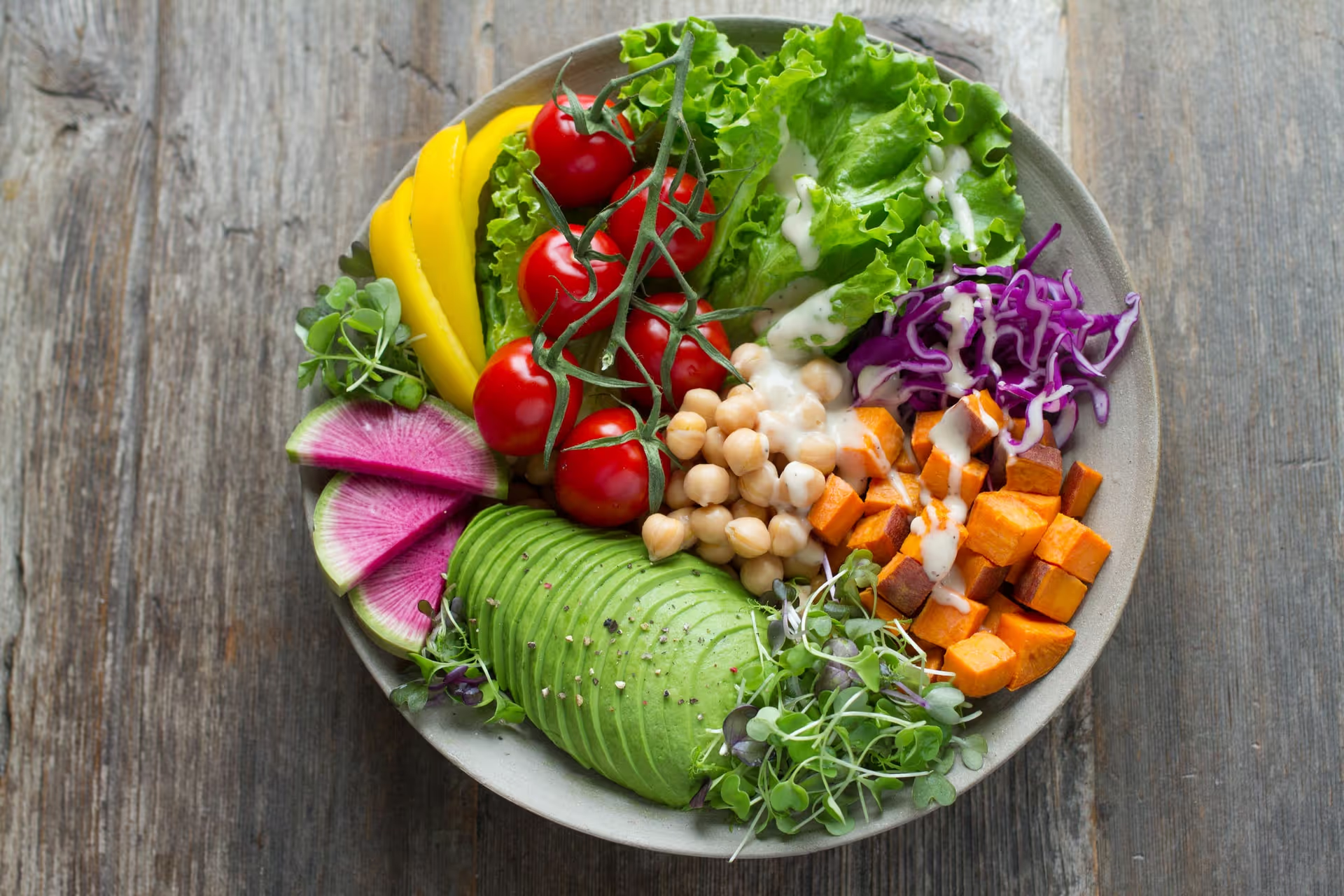A simple Vegetarian Moussaka, packed with lovely layered roasted vegetables and Feta cheese slices, then topped with yoghurt and Parmesan cheese.
The word “vegetable” was first recorded in the English language in the early 15th century and was derived from the Medieval Latin word “vegetabilis”, which means 'growing, flourishing'.
Vegetables are part of our daily life with its everyday usage and eaten in a variety of ways, either raw or cooked. They play an important role in nutrition, as most vegetables are low in fat and calories but at the same time, bulky and filling. They are an important source of dietary fiber and essential vitamins like vitamin A, K, C, E and B6, minerals, trace elements and are also an important source of anti-oxidants.
Vegetables when included in the diet, have been found to remarkably reduce the incidence of cancer, stroke, cardiovascular disease and other chronic ailments. Research has shown that, compared with individuals who eat less than three servings of fruits and vegetables each day, than those who eat more than five servings, have an approximately twenty percent higher risk of developing coronary heart disease or stroke.
Fun fact!
Technically, tomatoes, green beans, pumpkins, squash and cucumbers are fruit because they have seeds. They don’t have a sweet taste like other fruit, but they are indeed fruit.Here are some of the popular types of vegetables...
1. Artichokes
Native to the Mediterranean. Greeks, Romans and the Arabs have been eating it and during the 15th century they started growing and producing it in Italy.
2. Asparagus
It is native to the Eastern Mediterranean region.
3. Aubergines or Eggplants
Native to India, they spread to China during the 15th century and are now being grown in Southern Europe.
4. Carrots
It is a world favorite and until about 1600s, carrots were originally colored purple until Holland sold orange colored carrots in the 1700s.
5. Cauliflowers
Originally came from China where they were about the size of a cricket ball.
6. Chickpeas
Native to the Middle East and were popular with the Romans and have been eaten in Europe ever since.
7. Lentils
It has been eaten since prehistoric times. Lentils are native to Asia and they were eaten by Egyptians, Greeks and the Romans. They are also hugely popular in India.
8. Onions
Grown in the Middle East since thousands of years. Slaves, building the pyramids in ancient Egypt ate onions, garlic and radishes.
9. Potatoes
Originated in South America and taken to England and Europe by famed explorer Sir Francis Drake.
10. Pumpkins
Native to Central America and have been a staple food. It was later adopted by European colonist, as it was Christopher Columbus who brought pumpkin seeds to Europe.
11. Spinach
Native to Asia and was first grown in Persia, and later adopted by the Arabs and the Chinese. The Arabs introduced spinach to Southern Europe and by the 14 century, it was eaten widely in England.
12. Tomatoes
Native to South America, the Spaniards came across them in the 16th century, ever since widely used in Spain.
Vegetable Recipe of the Day - Vegetarian Moussaka

About Vegetarian Moussaka
The English name for "moussaka" comes from Greek 'mousakás', which is derived from the Turkish 'musakka', which actually came from Arabic word 'musaqqa‘ah (مسقعة)', meaning "chilled". Some even believe that the Arabs introduced moussaka in Greece, from where they brought the eggplant.
Moussaka is an eggplant (aubergine) or potato-based dish, and often includes ground meat, in the cuisines of the countries of the former Ottoman Empire, with many local and regional variants.
In Turkey, it is sautéed and served in the style of a casserole and consumed warm or at room temperature. In some Arabic countries, it is continued to be eaten cold, as originally done.
It was through Nikos Tselementes, a Greek chef of Siphnian origin who grew up in Constantinople and trained in France, that the Greek Moussaka came to be.He brought a twist by adding the French sauce, Béchamel to the Moussaka, making all the difference in taste.
This Dish
This is a simple Vegetarian Moussaka, packed with lovely layered roasted vegetables and Feta cheese slices, then topped with yoghurt and Parmesan cheese.
Recipe Card (to serve 4 pax)
Method of Cooking
- Preheat the oven to 200°C.
- Place the sliced potatoes in a roasting tray with the eggplant, zucchini, onion, garlic and peppers, then season the vegetables with salt & pepper.
- Sprinkle with thyme, drizzle with the olive oil and mix.
- Roast the vegetables for 15-20 minutes, turning the tray halfway through the cooking process. Add the tomatoes and cook for 5 minutes, until tender and scorched at the edges. Remove from oven.
- Then for the next part of the cooking, reduce the oven to 160°C.
- To layer: Place the half of the roasted vegetables in a casserole/ovenproof dish, then layer over half the tomato purée and all the Feta. Top with the remaining vegetables and tomato purée.
- In a bowl, mix the yogurt, eggs and Parmesan until smooth and pour over the vegetables. Bake for 20-30 minutes.
- Make sure the yogurt mix is firm before serving.
- Garnish with thyme leaves.



-min.jpg)







